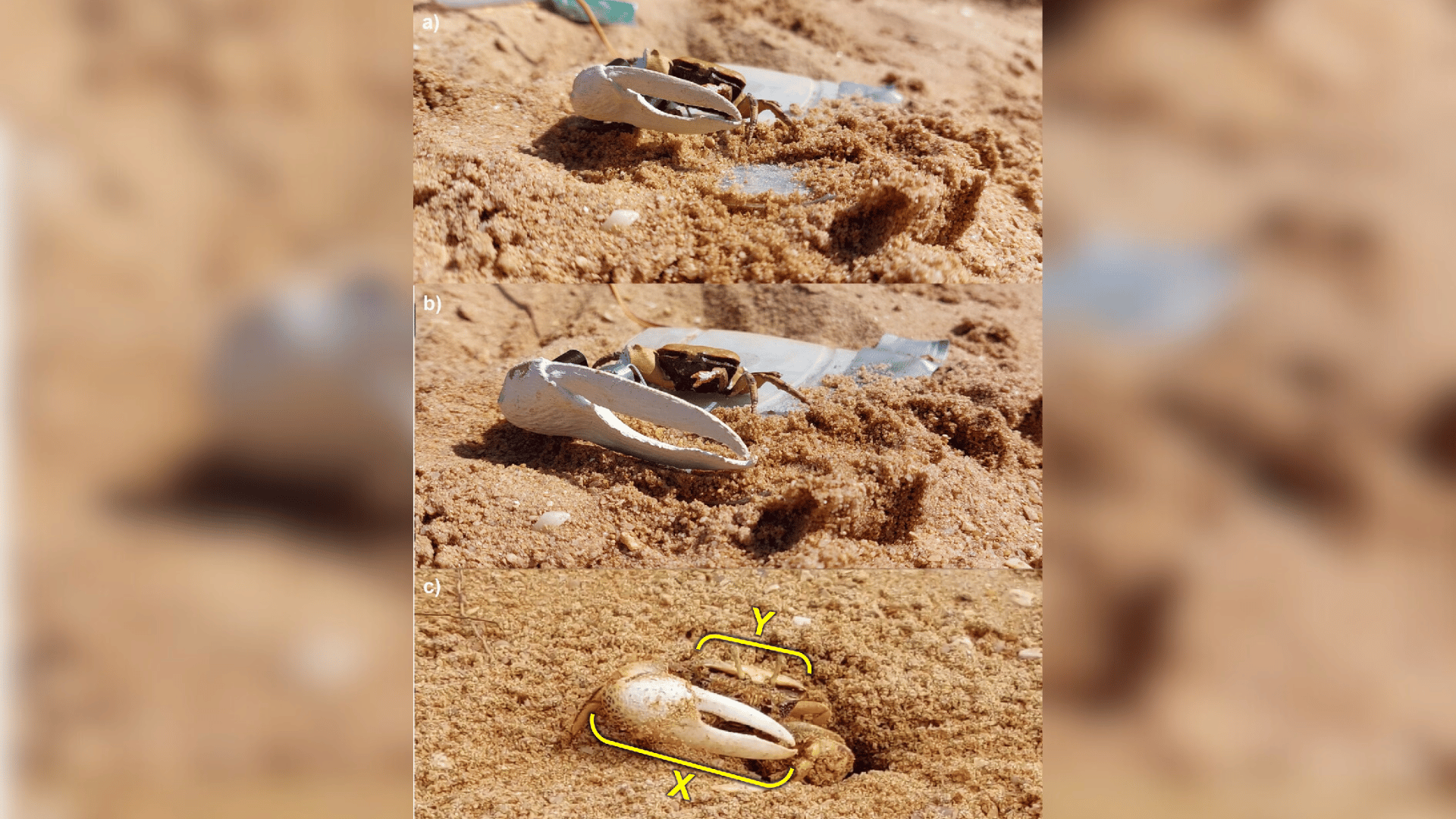A robot crab, nicknamed “Wavy Dave,” infiltrated fiddler crab communities and participated in claw-waving contests, during which males wave one oversized claw to attract females.
Robot vs. Real Crabs

Taking place on the mudflats of southern Portugal, this type of claw-waving behavior is crucial for fiddler crab reproduction. If a male crab impresses a female crab with this display, the female will enter the male’s burrow, where he will fertilize her eggs.
The study’s first author, Joe Wilde, a statistician and modeler in ecology and environmental science at Biomathematics and Statistics Scotland, used a 3D printer to create a model of a fiddler crab. Then he built Wavy Dave’s claw mechanism with two interchangeable options: one average length and one large. The robot was controlled from a mobile app via Bluetooth.
According to the new study, however, Wavy Dave was not the most convincing as a real male crab.
“The females realised he was a bit odd, and some of the males tried to fight him,” Wilde said in a statement. “One male broke Wavy Dave by pulling off his claw. We had to abandon that trial and reboot the robot.”
Though the experiment wasn’t perfect, the display did provide researchers with new insights regarding how male crabs respond to rivals. According to Live Science, scientists knew that animals adapt their display behaviors based on rival proximity, but not much is known about how they respond to changes in their rivals’ signaling behaviors.
According to the statement, females select males with larger claws who wave their claws quickly. Researchers noted that, when Wavy Dave was present, rival male crabs waved for longer but not faster. They speculate that the other male crabs assumed a female was present because of Wavy Dave, but they waited until they saw one before putting on their full display.
They also found that Wavy Dave’s presence made male crabs less likely to retreat to their burrows, particularly when his claw was small and thus less likely to attract a female. The researchers published their findings in the journal Proceedings of the Royal Society B Biological Sciences.
“If you own a shop and your rivals start selling things really cheaply, you might have to change how you run your business,” Wilde said. “The same might be true for males signalling to attract females, and our study suggests males do indeed respond to competition. Our findings reveal the subtle ways in which these crabs adjust their behaviour to compete in a dynamic environment, investing more in signalling when it is likely to be most profitable.”







